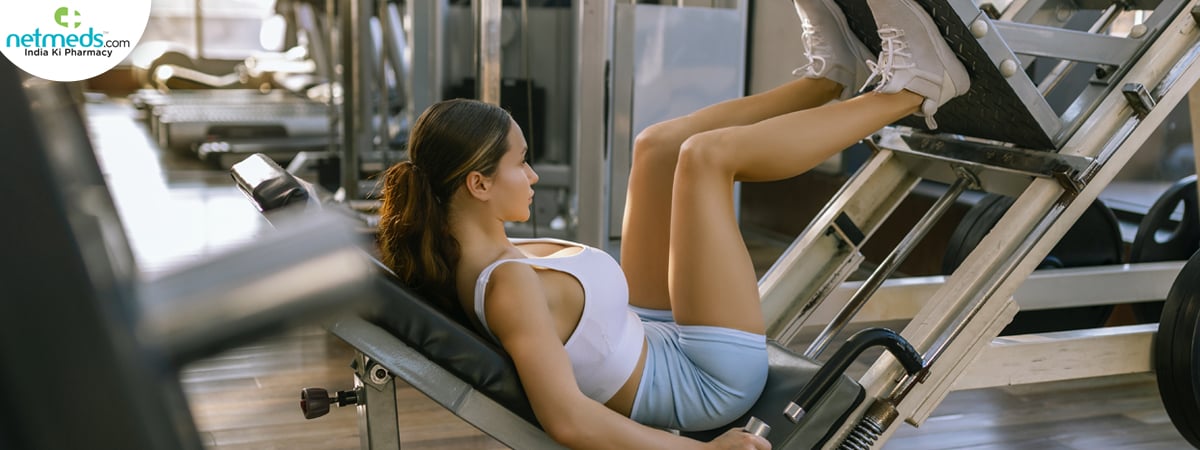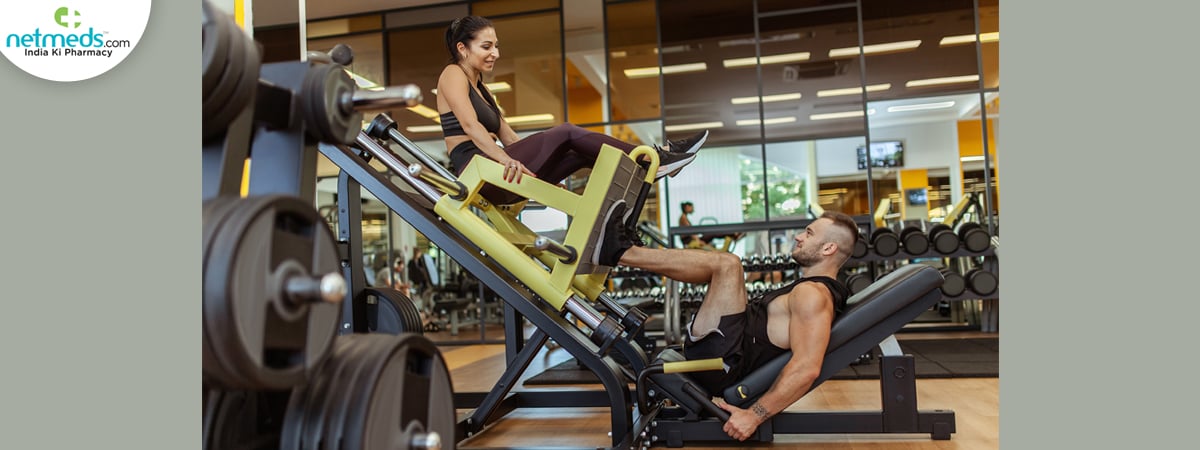When it comes to building strong, sculpted legs and glutes, one machine that often steals the spotlight is the leg press. Be it that you are just starting out at the gym or you are a seasoned lifter looking to intensify your lower body routine, the leg press can be a game-changer if done right.
It is easy to assume pushing weight with your legs is foolproof, but small form mistakes or using the wrong technique can reduce the benefits and even increase injury risk. The good news? With a few expert tips, the leg press can become your best friend for achieving those toned glutes, defined thighs, and bulletproof quads you have been working toward.

Also Read: Superb Exercises To Tone Down Your Legs And Thighs
In this guide, we will break down how to do a leg press correctly, its top benefits, smart variations to try, and common mistakes to watch out for so you can get the most from every rep.
What is the Leg Press Exercise?
The leg press is a popular lower-body strength training exercise performed using a specialized machine that allows you to push weight away from your body using your legs. It primarily targets the quadriceps, hamstrings, glutes, and calves, making it an effective move for building strength and muscle definition in your lower half. The exercise involves sitting on the leg press machine with your back supported, feet placed on a platform, and pushing the weight upward using controlled leg movements. Unlike free-weight squats, the leg press provides more back support and stability, making it a great option for beginners, those with joint issues, or anyone looking to isolate their leg muscles with less strain on the spine.
Also Read: Sumo Squat: Benefits, Variations And How To Do It For Leg And Calf Strength

Amazing Benefits Of Doing Leg Press
Builds Stronger Glutes and Quads
The leg press directly targets your gluteus maximus, quadriceps, and hamstrings making it one of the most effective lower-body workouts for strength and size.
Perfect for Beginners
Unlike barbell squats, the leg press offers more back support and stability, making it easier for beginners to focus on leg form and muscle engagement.
Supports Muscle Isolation
Want to really feel the burn in your glutes? Slight changes in foot placement can help isolate and activate specific muscles more intensely.
Joint-Friendly Strength Gains
Since you are seated and supported, the leg press puts less strain on your spine and knees (if done properly), reducing the risk of injury.
Boosts Athletic Performance
Stronger legs mean improved balance, speed, and power, key components whether you are into running, sports, or functional fitness.
How To Do a Leg Press? (Step-by-Step)
Adjust the machine: Sit on the leg press machine and place your feet shoulder-width apart in the middle of the footplate. Adjust the seat so that your knees are bent at about 90 degrees.
Foot placement matters: Make sure your entire foot is pressing into the platform, not just your toes or heels.
Brace your core: Engage your core and keep your back flat against the seat.
Push through your heels: Slowly extend your legs, pressing the weight up but do not lock your knees at the top.
Controlled return: Lower the weight with control until your knees are at a 90-degree angle again.
Repeat: Perform 3–4 sets of 10–15 reps, depending on your goal.
Best Leg Press Variations To Target Glutes and Legs
High Foot Placement
Shifting your feet higher on the platform emphasizes the glutes and hamstrings more than the quads.
Low Foot Placement
Lower placement activates the quadriceps more intensely.
Single-Leg Leg Press
Great for correcting muscle imbalances, this unilateral version also challenges your core stability.
Wide Stance Leg Press
Targets the inner thighs (adductors) along with your glutes.
Narrow Stance Leg Press
Focuses more on the outer thighs and quads.
Pro Tip: Switch up variations every 2–3 weeks to keep your lower-body workouts exciting and effective.
Common Leg Press Mistakes To Avoid
Locking Out Your Knees
Hyperextending your knees at the top of the movement can cause serious strain and lead to injury.
Lifting Your Hips Off the Seat
Keep your back and glutes flat on the seat to avoid lower back stress.
Using Too Much Weight Too Soon
Start with moderate weight. Going too heavy can cause poor form and increase injury risk.
Half Reps
Only pressing halfway limits your range of motion and effectiveness. Aim for full, controlled reps.
Poor Foot Placement
When the feet are placed too low on the platform, it can cause knee strain. Then again, placing them too high can limit your range of motion. So, find your sweet spot and adjust as needed.
Frequently Asked Questions
How often should I do leg press in a week?
2–3 times a week is ideal, depending on your overall lower-body training routine.
Is leg press enough to build glutes?
It is a great glute builder, especially with a high foot placement, but pairing it with exercises like hip thrusts and lunges will give better overall results.
What weight should I start with on the leg press?
Start with a weight that allows 10–12 reps with good form. For most beginners, that is 50–70% of your body weight.
Can I do leg press instead of squats?
Yes and no. Leg press is a great alternative for joint-friendly strength, but squats train more stabilizer muscles and mimic real-world movement better.
Should I go deep on the leg press?
Go deep enough so your knees form a 90-degree angle, but not so deep that your lower back lifts off the pad.
Conclusion
The leg press isn’t just a basic gym machine; it is a powerhouse tool for sculpting strong legs and lifting your glutes. Done correctly, it delivers amazing results without putting excessive strain on your joints. Add variations, stay consistent, and always prioritize proper form over heavy weights. With time, those toned glutes and powerful thighs will speak for themselves!
(This article is reviewed by Kalyani Krishna Chief Content Editor)
Author Profile
Soumita Basu:
Soumita Basu holds a Bachelor’s Degree in Pharmacy and is keenly interested in Ayurveda, home remedies, yoga, fitness, diagnostics, and beauty. With nearly 6 years of experience, she produces evidence-based health content, including articles, videos, and infographics, to provide valuable insights to her audience.
References:



 Previous
Previous